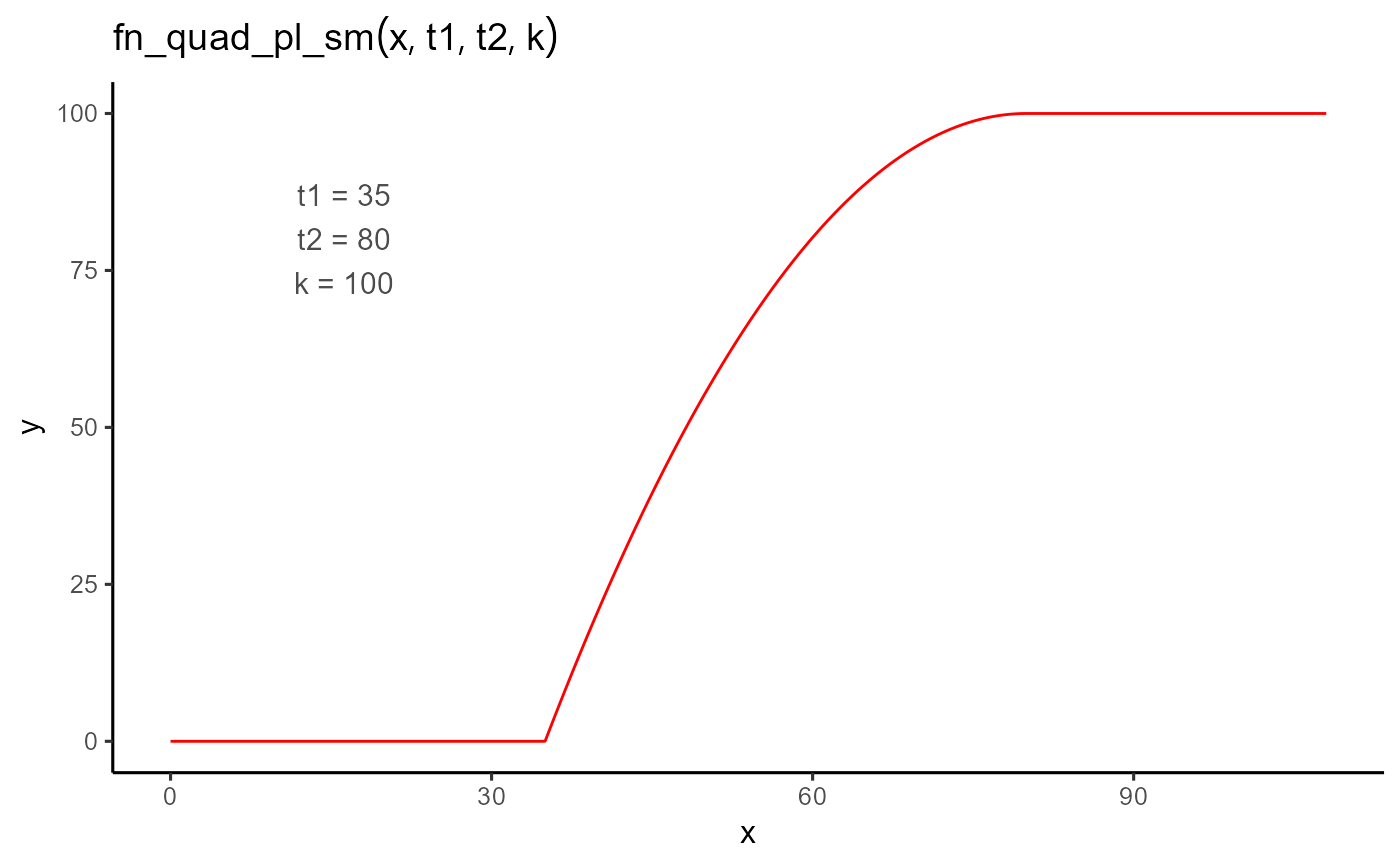A piecewise function that models a quadratic increase from zero to a plateau value. The function is continuous and differentiable, modeling growth processes with a smooth transition to a maximum response.
Details
$$ f(t; t_1, t_2, k) = \begin{cases} 0 & \text{if } t < t_1 \\ -\dfrac{k}{(t_2 - t_1)^2} (t - t_1)^2 + \dfrac{2k}{t_2 - t_1} (t - t_1) & \text{if } t_1 \leq t \leq t_2 \\ k & \text{if } t > t_2 \end{cases} $$
The coefficients of the quadratic section are chosen such that the curve passes through
(t1, 0) and (t2, k) with a continuous first derivative (i.e., smooth transition).

